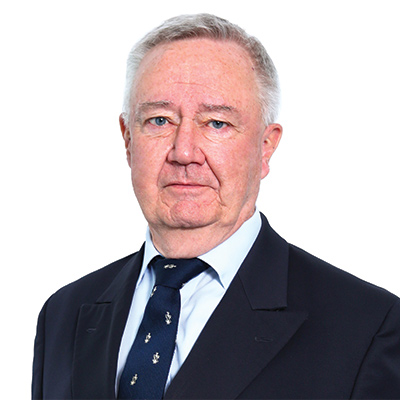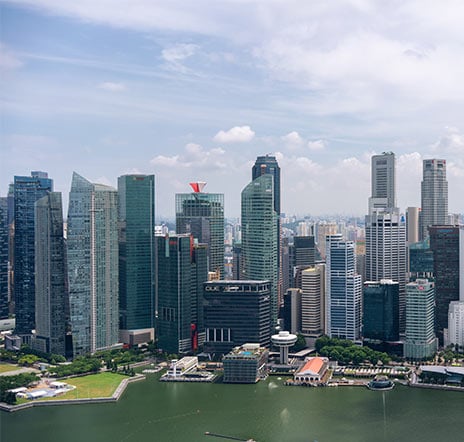
Rearranging the deckchairs on the Titanic
Singapore’s new fund management incentives: Ambition, reality, and the limits of tax policy
Singapore’s 2025 Budget unveiled two new fund management incentives: the FSI-Fund Management Listing (FSI-FM Listing) and FSI-Fund Management Singapore Equities (FSI-FM SG Equities) schemes, both of which stem from the Equities Market Review Group’s recommendations. While framed as enhancements for the fund management industry, these policies aim to resuscitate the flagging Singapore Exchange (SGX), which faces declining liquidity, sparse listings, and mounting competition from regional markets.
Although Singapore's fund management sector remains robust, policymakers are seeking ways to leverage its strength to reverse SGX’s downward trajectory. This article evaluates whether these new schemes can induce transformational change.
FSI-FM Listing: 5% tax rate for going (and staying) public
Fund management companies (FMCs) or their holding entities can qualify for a 5% concessionary tax rate on qualifying income for five years by attaining a primary listing in Singapore post-19 February 2025, subject to a minimum of SGD 800 million assets under management (AUM) and a set number of investment professionals. The incentive period is non-renewable.
To sustain the benefit:
- The FMC must stay listed throughout the period.
- The AUM and staffing levels must be maintained.
- At least 20% of after-tax profit must be distributed annually as dividends.
Failure to meet these standards leads to loss or suspension of the incentive, reverting to a 10% tax rate under the existing FSI-FM incentive.
Our thoughts
The five-year limit feels misaligned with typical fund lifecycles, especially in private equity, venture capital, and private real estate sectors, where carried interest, the real compensation engine for these types of managers, often kicks in only after the divestment programme has begun. Since base fees generally cover only operational costs, fund managers may find themselves needing to bet on hitting a timing jackpot, potentially compromising long-term strategy for their investors in favour of short-term gains for themselves. Conflict number one.
This will rule out many players, suggesting the incentive is targeted at managers of retail funds whose earnings are more predictable and stable. But here's the rub: this end of the market is already dominated by large international firms, local banks, and insurance companies which hardly need tax carrots to list, assuming they are not listed somewhere already.
Given also the significant listing and maintenance costs – legal, compliance, governance, as well as plain management stress – the incentive might only appeal if the listing aligns with broader aims for growth. The mandatory 20% profit distribution may also dissuade firms in growth mode, who would prefer to reinvest rather than distribute.
Smaller fund managers may nevertheless have aspirations of greatness. But with fund management being primarily a “people and brand” business with limited capital needs, listing may not be an obvious, or compelling, choice for the expansion journey.
In truth, encouraging the listing of funds – rather than the management entities themselves – might have made more sense. That would offer broader market access to private market strategies like PE, infrastructure, and VC, without the distortions or added costs associated with manager listings. Mind you, SPACs didn’t exactly create a stampede.

FSI-FM SG Equities: Tax exemption for domestic allocation
This scheme grants full exemption from tax for five years (again, non-renewable), to fund managers with SGD 250 million or more in AUM that allocate at least 30% of that AUM to Singapore-listed equities. Conditions include:
- Compliance with the 30% SGX investment threshold throughout the period.
- Annual net inflows of 5% of prior-year AUM.
- Minimum headcount retention.
Failure, however, triggers temporary suspension, not revocation.
Mandated domestic allocation: A square peg in a global round hole?
As with the FSI-FM Listing incentive, the five-year time limit may may narrow down the interested parties. However, it is the 30% Singapore equities allocation that poses the real hurdle. It’s a high bar – especially for institutional fund managers with global mandates. Private equity and venture capital players will, by definition, steer clear. Real estate managers might show interest (due to REITs), but alignment is not guaranteed.
Again, the likeliest participants are retail-focused managers. But the cohort noted above that dominates this area, confines its investment to liquid, blue-chip SGX names, in other words STI companies, making it a bit of a crowded house. Over-concentration in the lower strata of the Exchange may dampen returns, especially when the market has historically underperformed peers like Hong Kong or the U.S.
While the STI Index has broken through 4,000 recently, the SGX overall still lags behind on volume, vibrancy, and blockbuster IPOs. The scheme supposes that by forcing money into local equities, liquidity will follow. But unless there’s investor demand on the other side, this makes for an awkward discussion between investor and manager (conflict number two):
Investor: “Why are you allocating my capital to a lack-lustre market?”
Manager: “Because it saves us tax and to stimulate market growth.”
Investor: “I don’t mind paying to save the planet. But I draw the line at saving stock exchanges.”
The policy prioritises market engineering through tax design over independent investment strategy. International managers will likely hesitate to overweight a small, illiquid market, especially under fiduciary constraints, red tape and administration. The likeliest benefactors may be captive or domestically oriented fund managers who will only be continuing with their current investment strategy. As such, the scheme’s transformational aspirations will be limited.
It is strongly suspected (by me, at any rate) that the withdrawal of the venture capital tax incentive under sections 13G and 43V of the Income Tax Act – was largely motivated by lack of manager interest – despite a 5% tax rate for performance fees. The local investment mandate was a bridge too far for most. It is difficult to see how switching the mandate from unlisted to listed will set the place on fire.

Conclusion: Cosmetic fix or catalyst (no pun intended)?
While these incentives are presented as strategic levers, they may be too narrow and rigid to have wide appeal. The hope is to add liquidity and listings, but tax tweaks can’t resolve systemic flaws. Improvements to market dynamism, competitive listings, analyst coverage, and IPO infrastructure would arguably have more impact than box-ticking AUM thresholds or tax holidays.
Listing decisions are multi-faceted and not made in a vacuum. For lean FMCs, tax perks are unlikely to justify listing burdens without a broader strategic logic - such as access to retail capital, branding ambitions, or expansion desires. Without those elements, the schemes risk attracting only a few well-positioned incumbents.
Moreover, metrics like AUM size and Singapore allocation ratios might screen out exactly those global or emerging managers that Singapore should be courting. And with both incentives capped at non-renewable five-year terms, alignment with the economics of many fund managers remains weak.
The “deckchairs on the Titanic” metaphor may seem exaggerated, but it provokes a valid image. These schemes are well-intentioned efforts to patch visible cracks in SGX’s competitiveness. Yet they risk being more aesthetic than functional if not supported by broader reforms. It is a chicken and egg situation.
The main goal - reinvigorating Singapore’s equity capital markets - requires more substantial intervention. Tax incentives can complement, but cannot spearhead, structural transformation. The Equity Market Review Group clearly acknowledges this.
Ultimately, real revival will hinge less on fund management tax incentives and more on deepening Singapore’s appeal as an investment destination, improving IPO ecosystems, reducing costs of public capital, and creating a thriving analyst and investor community. Until such foundational steps are taken, these tax measures may remain just that: well-crafted but ultimately superficial props on an increasingly wobbly stage.
But for what it’s worth, here are some suggested tweaks that might make these schemes more meaningful to a wider audience:
- Align incentive duration with fund lifecycles: Extend to 10 years or make renewable.
- Relax investment mandates: Allow blended definitions of “Singapore-linked” assets.
- Simplify compliance: Streamline rules to prevent incentive fatigue.
- Switch the focus: Give the incentives to managers for listing the funds.
I may be wrong - and I would like to be proven so – and there may, as we speak, be a long line of candidates queuing at the door. But somehow….
About the author

Related insights
View more

